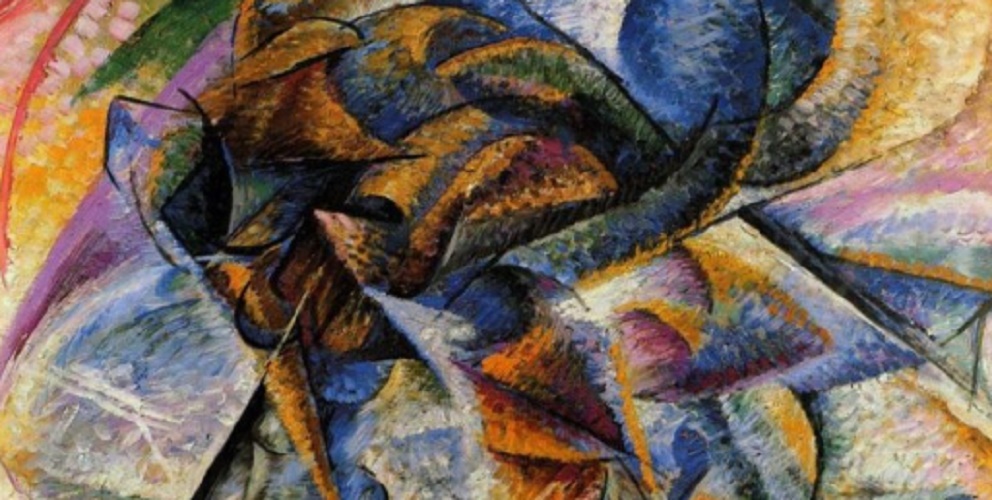What is futurism?
We explain what is futurism, the historical, social context and its characteristics. Poems, painting and futuristic architecture.
-
What is futurism?
Futurism was known as one of the many artistic trends that made up the European avant-garde of the twentieth century, emerged in Italy in 1909 , when the Italian poet, playwright and editor Filippo Tommaso Marinetti published his Futurist Manifesto in the newspaper Le Figaro in Paris.
It was an avid movement to break with tradition , the past and considered until then as main features of art and poetry , postulating instead the exaltation of the sensual, the national and irreverence.
Futurism was offered as a current, fierce and aggressive movement , as can be read in the Futuristic Manifesto:“… We affirm that the magnificence of the world has been enriched by a new beauty: the beauty of speed. A racing car, with its radiator adorned with thick snake-like tubes of explosive breath … a roaring car, which seems to run on shrapnel, is more beautiful than the Victory of Samothrace. ”
And although its main axis had to do with literature , it also had an important impact on the painting , which is evident with the signing of the Manifesto of the futurist painters the year after the publication of Marinetti’s text.
Futurism and its manifesto marked an important precedent for later artistic movements , such as surrealism , and it is considered as a naturally involuntary antecedent of fascist thinking that would arise in Mussolini’s Italy almost thirty years later.
Futurism was born in Milan, Italy, and is considered a fundamentally Italian movement , given its nationalist, misogynist and warlike temper, which led its greatest exponents to enlist when the first trumpets of World War I sounded .
Few returned from the front, and those who did not necessarily continued with the movement, so the futuristic operating center went from Milan to Rome. Thus, when Marinetti dies in 1944, Futurism had already become a much more submissive movement , handed over to the academy, betraying its rebel spirit.
-
Futurism Features

Futurism defined itself from its obsession with speed , which it considered a virtue of the coming times. He appreciated technology , energy , strength, and it tried to capture his pictorial or poetic works, using shapes, rhythms and transparencies, as well as successions of images as in a kaleidoscope.
On the other hand, it exalted originality, nationalism, bustle and consideration of life as a constant struggle, so that beauty, according to them, was necessarily involved in confrontation . Their songs to the Revolution, the audacity, the objectivity and the rejection of the traditional aesthetic were frequent, embracing in its place the contemporary life, the machine and the movement. In that sense, he could resort to any expressive method ( plastic arts , architecture , urban planning, fashion, cinema , advertising , music, etc.) in order to create an “art in action”.
-
Futuristic Poems
Futuristic poetry was sparsely cultivated in futuristic Italy , and much more in its Russian variant, emerged in the years before the First World War. Great Russian poets like Mayakovski and Burliuk, who also practiced painting, were enthusiastic futurist poets, so dedicated to the scandal and their own perspectives that they got to boo Marinetti himself during his visit to Russia in 1914.
In these poems it is common to find revolutionary enthusiasm , perhaps an admonition of what would happen in the October Revolution of 1917, when communist militants would overthrow tsarism and establish a Soviet regime. The song of modernity, the machine, progress and the speed of change are felt in his verses . Here is a clear example of this:
- “Poet and worker” by Vladimir Mayakovski We are even. Partners, within the working class. Proletarians of body and soul. Only together will we beautify the world. And we will promote it with hymns.
- “Song of the car” by Filippo Tommaso Marinetti (fragment) God, vehemently of a race of steel, a car drunk with space, that piafas of anguish, with the brakes on the strident teeth! of flames and mineral oils, hungry for horizons and dams sideralestu heart expands with its devilish taf-taf (…) ”
-
Futuristic painting

Futuristic painting was a direct heiress of Cubism , to such an extent that the first Italian paintings attached to Futurism could have been perfectly exposed as Cubists . However, they quickly sought their own style, based on their desire to represent reality in their strokes and shapes.
They used pure color and geometric shapes , painting objects successively, as if in motion , or blurring them, as is done today in comics. Many of their cultivators will reach abstractionism, through their incursion into rayonism.
-
Futuristic architecture
Embracing antihistoricism, futuristic architecture also pursued the representation of speed , through long horizontal lines that aspired to convey urgency, movement , restlessness.
It was a dynamic architectural trend, which valued the calculation, boldness and simplicity , aiming at materials that provide agility and lightness, such as reinforced concrete, iron, glass, cardboard and textile fiber, to replace wood , the brick and the stone.
Futuristic architecture wanted to find its inspiration in the modern world , just as the ancients found it in the natural world around them, and therefore wanted an architectural art that would accept its own expiration, its transience, allowing each generation to make their own city , burying the previous ones.
-
Authors and representatives
Some of the main representatives of futurism in its various artistic disciplines were:
- Futuristic poetry Filippo T. Marinetti, Giovanni Papini, Giuseppe Ungaretti, Carlos Felipe Porfirio, and the Russians Vladimir Mayakovski, David Burliuk, Aleksei Kruchónyj, Velimir Jlébnikov,
- Futuristic painting Giacomo Balla, Umberto Boccioni, Carlo Carrà, Luigi Russolo, Gino Severini, Antonio Sant’Elia, or the Argentine Emilio Pettoruti.
- Futuristic Architecture Angiolo Mazzoni, Antonio Sant’Elia, Nikolay Diulgheroff.





